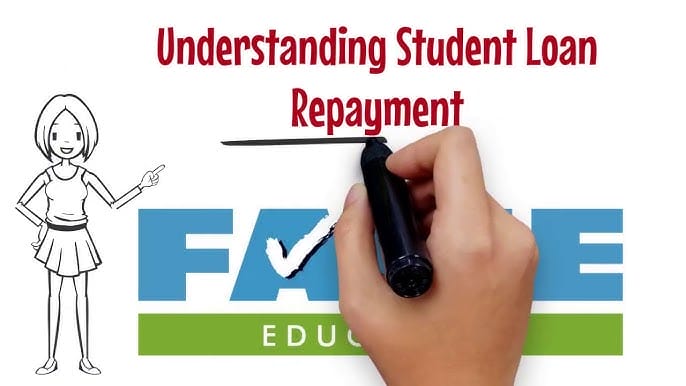Learn everything you need to know about student loans repayment, including smart strategies, repayment plans, and tips to manage your debt without stress.
Introduction: The Student Loan Reality
Graduating from college is a huge milestone, but for millions of students, it also marks the beginning of a long journey — student loans repayment. While taking out student loans can open doors to higher education, paying them back is often a challenge that lasts for years.
If you’re wondering how to manage your repayment effectively and avoid financial stress, this article is for you. Let’s explore practical strategies to take control of your student debt and make the process easier and more manageable.
Understanding Your Student Loans
Before jumping into repayment strategies, it’s crucial to know what kind of student loans you have. There are two main types:
Federal Student Loans: What They Are
Federal student loans are loans you get from the U.S. government to help pay for school. They are often better than private loans. Here’s why:
- Fixed interest rate: The rate stays the same for the life of the loan. You know how much you will pay.
- Easy payment plans: You can choose how to pay. Some plans let you pay less if you earn less.
- Start later: You don’t have to pay while you are in school. You start after you leave.
- Loan forgiveness: If you work in public service, you may not have to pay all of your loan.
- These loans are safe and fair. They are made to help students, not to make profit.
- Private student loans: Issued by private lenders, these often come with variable interest rates and fewer repayment protections.
Why does this matter?
Knowing the type of loan you have determines what repayment plans or forgiveness programs you may qualify for.
Top Student Loans Repayment Plans

There is not one best way for everyone to pay back student loans. Here are the most common repayment options:
- Standard Repayment Plan
Fixed monthly payments for 10 years.
Best for borrowers who can afford higher monthly payments and want to pay less interest over time.
- Income-Driven Repayment Plans
The amount you pay each month depends on how much money you make and how many people are in your family.
Examples include REPAYE, PAYE, IBR, and ICR.
After 20–25 years, any remaining balance may be forgiven (taxable).
- Graduated Repayment Plan
Payments start low and increase every two years.
Good for those expecting their income to grow over time.
- Extended Repayment Plan
Allows repayment over 25 years.
Ideal for borrowers with high loan balances looking for lower monthly payments.
Tips to Manage Your Student Loans Repayment Like a Pro
Even with the right plan, repayment can still be tough. Here are some smart tips to keep your finances on track:
Set Up Auto-Pay
Most lenders offer a small interest rate reduction (like 0.25%) for using auto-debit. Plus, it helps you avoid missing payments.
Make Extra Payments When Possible
Paying more than the minimum — even just once a year — can save you thousands in interest over the life of the loan.
Create a Budget Focused on Debt Reduction
Track your income and expenses. Prioritize loan payments and cut unnecessary spending.
Look Into Loan Forgiveness Programs
Teachers, nurses, public service employees, and others in certain sectors may qualify for loan forgiveness after meeting specific criteria.
Refinance with Caution
Refinancing can lower your interest rate, but you’ll lose access to federal protections like income-driven repayment and forgiveness programs. Only consider this if you have strong credit and a stable income.
How to Stay Motivated During Student Loans Repayment
Paying off student loans can take years, and it’s easy to feel overwhelmed or discouraged. Here’s how to stay motivated:
- Celebrate small wins: Every payment made is progress.
- Check your loan balance every month — watching it go down can help you stay motivated.
- Set a goal: Whether it’s becoming debt-free in 5 years or saving $10,000 in interest, a clear target helps you stay focused.
- Join online communities: Platforms like Reddit’s r/personalfinance are full of supportive stories and tips from others in similar situations.
Student Loans Repayment During Financial Hardship
Life happens — job loss, illness, or unexpected expenses can derail your repayment. If you’re struggling, consider these options:
- Deferment or Forbearance: Temporarily pause payments. Interest may still accrue.
- Recalculate Your Income-Driven Plan: Update your income to adjust your payments.
- Contact Your Loan Servicer: Ignoring your loans won’t help. Your loan company can help you find support programs that fit your situation.
Conclusion: Take Control of Your Student Debt Today
Student loans repayment doesn’t have to be a nightmare. With the right knowledge, tools, and mindset, you can take charge of your financial future. Whether you choose a standard plan or an income-driven option, make sure it fits your budget and goals. And remember, every dollar you pay gets you one step closer to freedom from debt.
So start today. Review your loans, choose the best repayment strategy, and take one step closer to a stress-free financial life.
